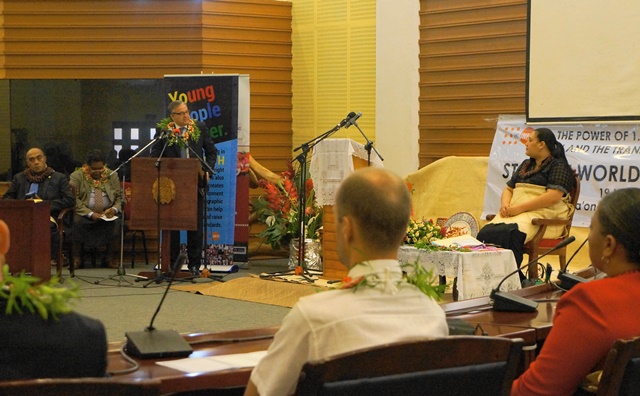You can be forgiven for thinking the United Nations Population Fund (UNFPA) only works in the area of young people, adolescents or youth, considering the emphasis we place on youth-related work particularly in the past few years as we strive towards a world where they can, for example, participate fully in decision-making processes.

While the organisation is mandated to work with United Nations (UN) member states in other areas like maternal health and data for development, the importance we place on youth reflects our strong believe that when and if we successfully address issues related to persons in this bracket - 10 to 24 years old - we are well on our way to achieving ambitious development goals.
A youth of 10 in 2015 will be an adult in 2030 which is the target year for achieving the next generation of sustainable development goals. To progress however our island nations will need to create an enabling environment which can support effective investment towards the empowerment of the youth cohort.
On November 18 (2014), the UNFPA globally launched its 2014 State of World Population (SWOP) report in London (United Kingdom). This year the report focuses on The Power of 1.8 Billion Adolescents, Youth and the Transformation of the Future. Tonga became the first country to host a SWOP Pacific Launch outside Fiji on November 19.
The 2014 report recognises the power 1.8 billion adolescents represent in terms of our collective progress as humanity. At the International Conference on Population and Development (ICPD) in 1994 in Cairo (Egypt), 179 world leaders endorsed a 20-year Program of Action (PoA) which has guided UNFPA's work so far.
After UN General Assembly agreed in 2010 that the UNFPA continues working on its mandate areas, a global survey in 176 member states and seven territories was conducted. UNFPA essentially asked the governments to assess their own progress as far as the implementation of the PoA was concerned.
The survey resulted in the identification of 21 actions pivotal to young people's enjoyment of their human rights including reproductive rights and their ability to realise their full potential in life. Six of the 21 actions were underlined by the report as fundamental to youth empowerment.
The report:
* Urges nations to prioritise equal access to sexual and reproductive health services including HIV prevention and treatment;
* Tthat more girls and adolescents are assured of a complete secondary school education;
* That the wellbeing of the girl-child is improved
* Ensuring comprehensive sexuality education so youth can access timely and correct information about what they are going through physically and emotionally; and
* Ending child marriage and ensuring that youth not captured in formal structures like schools can access information and services afforded to those in formal settings.
"Young people will drive the next set of global development goals. Nations which want to benefit from the power for development progress that this cohort represents will have to ascertain their intentions to invest in youth and support intentions with policies and funding to see through implementation," UNFPA Pacific director and representative Dr Laurent Zessler said.
The 2014 report identified five Pacific Island nations - Papua New Guinea, Samoa, Solomon Islands, Tonga and Vanuatu - where a demographic dividend is possible. A demographic dividend is when the working-age population is relatively larger than the non-working-age population (or dependents who are mainly children and the elderly).
When a country experiences this demographic dividend, there is a lot more money in state coffers for economic development. This is just one of the many aspects of "power" in this 1.8 billion youth cohort, whether the dividend is small or large will depend on the way a country invests in the human capital of its young people.
Young people are central to the next set of global development goals scheduled to begin its roll out post-2015. Specifically, young people will be key to ending poverty in all its forms regardless of their geographic location. Youth can ably carry forward the message and practice of healthy living and wellbeing for all. Their involvement will be critical to the realisation of inclusive, equitable and quality primary and secondary education. And this will in turn be crucial to the achievement of inclusive and sustainable economic growth.
Policies and investment are both critical but just as important are their timing and sequencing. As countries go through the demographic transition which paves the way to a demographic dividend, priorities will most certainly evolve but it would be prudent that related policies and investment are aligned and adjusted through these transitions.
The global survey showed most countries in the early stages of the demographic transition are striving to implement relevant policies. Countries which are struggling cite economic, social, cultural, legislative and security obstacles.
The propensity in countries striving to achieve demographic dividends to focus on employment security was noted but we must keep in mind that employment opportunities would mean nothing to people who are not of good health (perhaps because they did not have access to timely and correct sexual and reproductive health information and services) or to people who have not fulfilled their full potential academically.
The ball is in our court as a people first and foremost, apart from being UN member states, to create an enabling environment particularly in terms of policy alignment and funding support for the full realisation of a demographic dividend.


